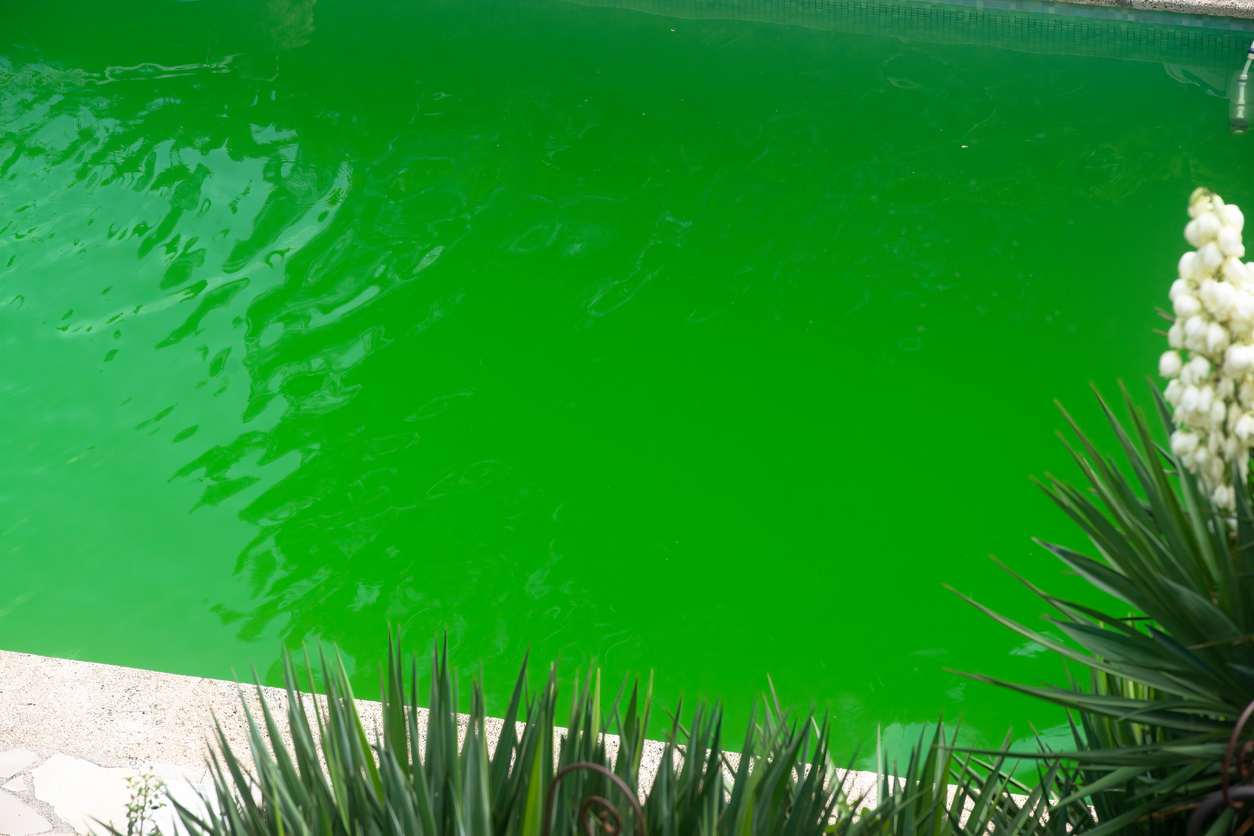Preventing and Treating Algae Growth

Nothing is more frustrating than uncovering your pool to find that once-sparkling blue water has transformed into a green, murky mess. Algae is one of the most persistent and annoying problems pool owners face, but the good news is that it can be prevented - and even if it does appear, it can be eliminated with the right approach. In this article, we'll explore why algae develops, how to prevent it, and what to do if it takes over your pool.
Understanding Algae: Why It Happens
Algae spores are always present in the environment, and pools provide the perfect conditions for them to thrive - especially if sanitization or circulation isn't up to par. Algae needs three things to grow:
- Sunlight - Just like plants, algae thrives on sunlight.
- Nutrients - Phosphates, nitrates, and organic debris in your pool serve as food for algae.
- Poor Circulation & Low Chlorine Levels - Stagnant water and insufficient sanitizer create the ideal environment for growth.
Types of Pool Algae & How to Treat Them
There are three main types of pool algae, each requiring a different approach.
Green Algae (Most Common & Easiest to Treat)
- Green, cloudy water with slimy walls and floors.
- Usually caused by low chlorine levels and poor filtration.
How to Treat:
- Shock your pool to raise chlorine levels significantly.
- Brush walls and floors to loosen algae and allow sanitizer to work.
- Run the pump continuously and clean the filter after treatment.
- Use an algaecide as a preventive measure after clearing the bloom.
Yellow/Mustard Algae (Harder to Kill)
- Appears as yellow or brownish dust, often on shady pool walls.
- More resistant to chlorine and may reappear if not treated correctly.
How to Treat:
- Brush the affected areas aggressively to loosen algae.
- Shock the pool using a high dose of chlorine.
- Use a specialized mustard algae algaecide for extra effectiveness.
- Soak pool accessories (toys, brushes, floats) in a chlorine solution to prevent reinfection.
Black Algae (Most Stubborn & Difficult to Remove)
- Dark black or blue-green spots that are deeply rooted in pool plaster.
- Resistant to chlorine and requires thorough scrubbing.
How to Treat:
- Use a stiff pool brush to break the protective outer layer.
- Apply a concentrated chlorine tablet or granular chlorine directly to the spots.
- Scrub again and shock the pool to kill lingering spores.
- Run the pump continuously for at least 24 hours.
Algae Prevention: Stop It Before It Starts
Algae prevention is much easier than dealing with a full-blown outbreak. Here are key habits to incorporate into your routine.
Maintain Proper Sanitizer Levels
- Keep chlorine between 1-3 ppm (for bromine, 3-5 ppm).
- Shock your pool every 1-2 weeks to eliminate microscopic contaminants before they cause problems.
Ensure Good Circulation & Filtration
- Run your pump at least 8-12 hours per day to prevent stagnant areas.
- Regularly clean and backwash your filter to ensure it's not clogged with debris.
Brush and Vacuum Weekly
Algae loves to cling to pool walls and floors. Regular brushing prevents it from gaining a foothold.
Monitor Phosphates & Organics
- Leaves, pollen, and even sunscreen can introduce phosphates (algae food) into your pool.
- Use a phosphate remover if levels are high.
Algae might be a common issue, but it doesn't have to be a recurring one. A well-maintained pool with proper chlorine levels, good circulation, and regular cleaning is far less likely to experience algae outbreaks. If an infestation does occur, quick action is key - shock, scrub, and filter aggressively to restore clear, inviting water.
